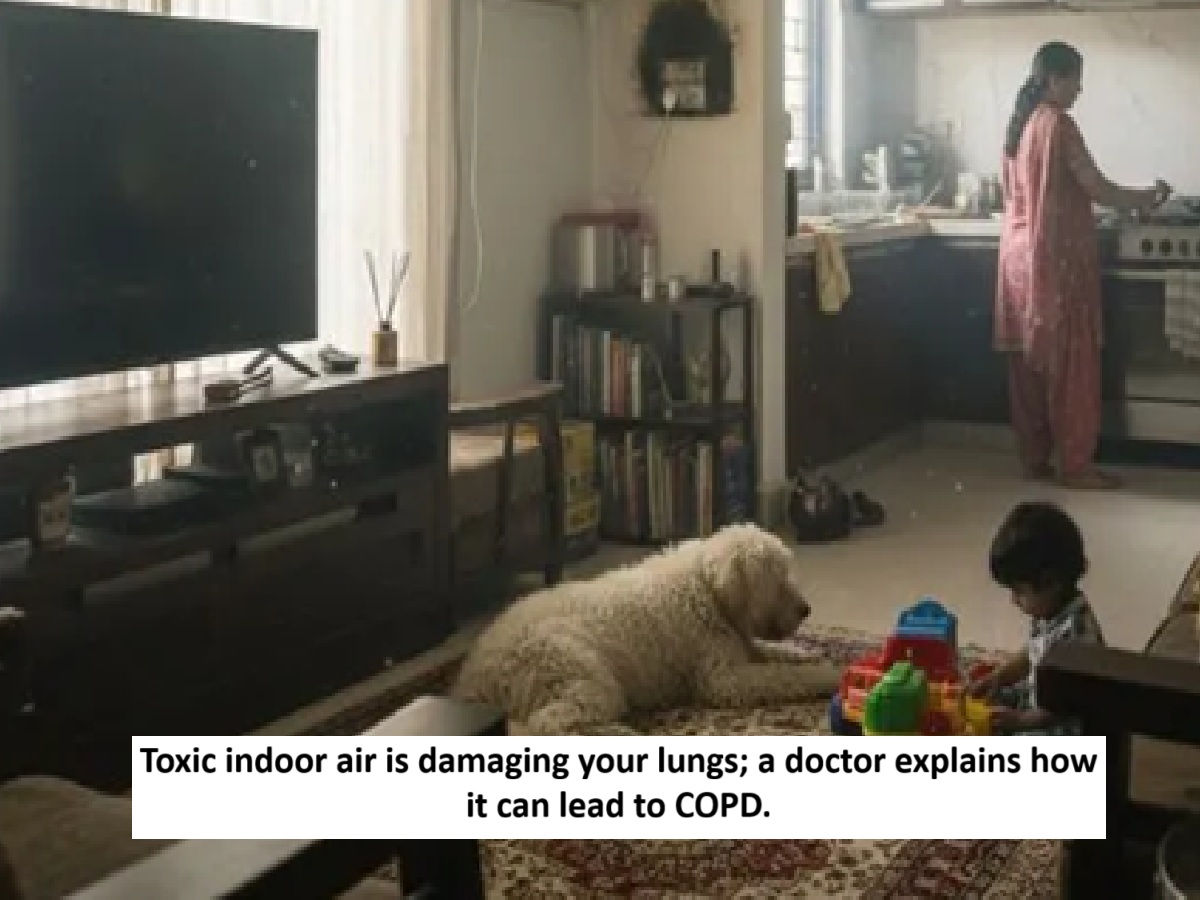
News Topical, Digital Desk : COPD is a serious lung disease, about which many people still lack awareness. Therefore, World COPD Day is celebrated every year on the third Wednesday of November to raise awareness about it.
It's commonly believed that air pollution from factors like vehicles, factories, and stubble burning increases the risk of COPD, but you might be surprised to know that the air in your home can also make you very sick.
Indoor air is a major cause of COPD.
He further explained that indoor air pollution, such as cooking smoke, the use of incense sticks, mosquito coils, room fresheners, and poor ventilation, increases the risk of chronic obstructive pulmonary disease (COPD). However, these causes of the disease are often overlooked. This is especially concerning for women, the elderly, and children, who spend most of their time indoors and near the kitchen.
How dangerous is indoor air?
In many homes, especially in rural and small towns, traditional stoves made from wood, coal, straw, or dung are used for cooking almost daily. These fuels release tiny particles and toxic gases that directly cause irritation and damage to the airways.
Long-term, repeated exposure can lead to chronic cough , phlegm, shortness of breath, and eventually COPD. This problem can occur even in people who have never smoked. Women cooking in poorly ventilated kitchens and young children playing nearby often become unwitting victims of harmful indoor smoke.
How indoor pollution is increasing
The doctor explained that it's not just stove smoke. Incense sticks, dhoop, mosquito coils, scented candles , and chemical-based room fresheners can also degrade indoor air quality. Particles from old mattresses, carpets, and damp walls, as well as mold and pet hair, can further irritate sensitive lungs. For someone with asthma or early COPD, using these products can trigger more attacks, worsen breathing difficulties, and increase hospital visits.
How to prevent it?
Regarding prevention, the doctor explained that even small changes can go a long way. Improved kitchen ventilation, the use of an exhaust fan or chimney, the use of healthy fuels (liquid propane gas or induction), and avoiding coils and strong aerosols can all help reduce indoor pollution.
Keep these things in mind as well
Regular cleaning to reduce dust, keeping windows open whenever possible, and wearing a mask when cooking in smoky areas are all simple but effective steps. COPD is often called a "smoker's disease," but for many Indian women and non-smokers, the problem begins at home—with poor indoor air quality. Recognizing indoor air pollution as a serious risk factor is the first step toward protecting the lungs of those who are silently exposed to it every day.
Read More: Toxic indoor air is damaging your lungs; a doctor explains how it can lead to COPD.
--Advertisement--

 Share
Share



